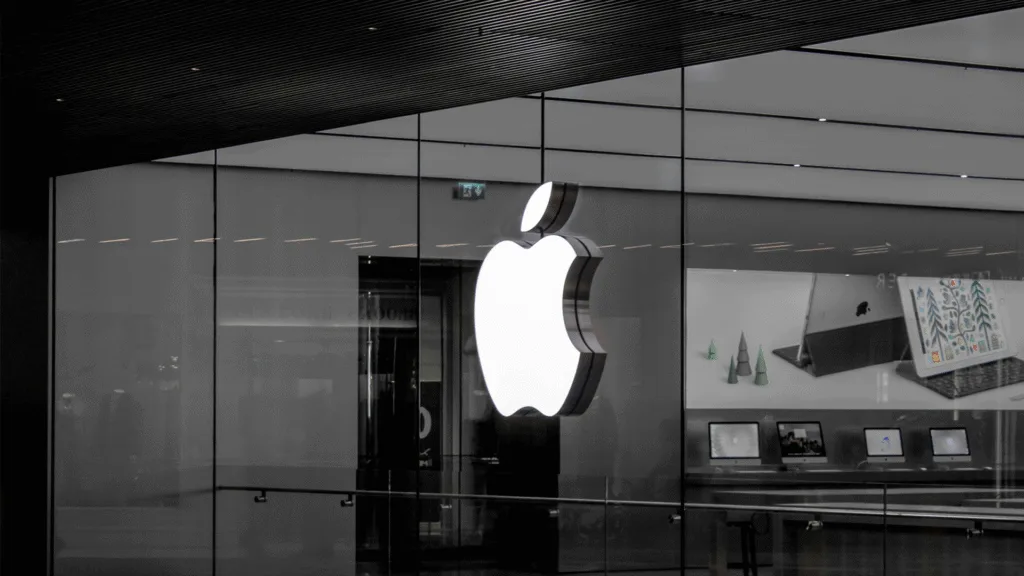Apple Inc. stands as a beacon of success in the technology sector. The company is renowned for its ability to generate substantial profits. It also maintains a loyal customer base. Apple’s business model is a sophisticated blend of innovation, premium pricing, and strategic diversification. A strong brand identity supports all these aspects. This blog will explore the key components of Apple’s business model. It will shed light on how Apple continues to thrive in a competitive landscape.
Key Takeaways
- Apple’s business model thrives on an unwavering commitment to innovation and significant R&D investments.
- An integrated ecosystem of hardware, software, and services fosters strong brand loyalty and recurring revenue streams.
- Premium pricing on high-margin products like the iPhone significantly contributes to Apple’s profitability.
- Diversified revenue (products and growing services) and strong financial health enable continuous growth and market resilience.
Innovation as a Core Strategy
Innovation sits at the heart of Apple’s business model. The company commits unwaveringly to it. Apple invests heavily in research and development (R&D). It dedicated approximately 7.8% of its revenue, around $27.5 billion in 2023, to creating groundbreaking technologies. This focus on innovation is more than just launching new gadgets. It involves redefining entire industries.
Apple has introduced iconic products. The iPhone revolutionized mobile communication. The iPad transformed personal computing. Furthermore, the Apple Watch created a new category in wearable technology. Apple maintains a disciplined approach to innovation. It prioritizes projects aligning with its core vision. It terminates those that do not meet its standards. For example, in 2023, Apple scaled back its autonomous vehicle program. It chose to focus on more impactful ventures.
Integrated Ecosystem
Apple’s integrated ecosystem provides one of its most significant competitive advantages. This ecosystem includes hardware, software, and services. They all work together seamlessly. This creates an exceptional user experience. Apple designs proprietary technologies like iOS and macOS. This ensures devices communicate effortlessly with each other.
The interconnectedness of Apple’s products encourages brand loyalty. Consumers who invest in one device often buy additional products. This enhances their experience. For instance, iPhone users often buy an Apple Watch. They might also subscribe to iCloud for storage solutions. This synergy boosts sales. It also fosters a sense of community among Apple users. Additionally, Apple’s services, such as the App Store, Apple Music, and iCloud, play a crucial role. These services create recurring revenue streams. They also enrich the overall user experience.
Premium Pricing and High-Margin Products
Apple’s pricing strategy reflects the value of its brand and products. The company charges premium prices. This is due to its strong reputation for quality and innovation. This strategy allows Apple to maintain high margins on its products. For instance, the iPhone remains highly sought after globally. This is true despite its higher price point compared to alternatives.
High-margin products complement this premium pricing strategy. They significantly contribute to profitability. In fiscal year 2023, iPhone sales accounted for over half of Apple’s total revenue. This underscores the device’s importance in the company’s portfolio. Furthermore, Apple’s commitment to quality ensures healthy profit margins, even as production costs rise. The company also optimizes its supply chain. This keeps production costs low while maintaining high standards for materials and manufacturing.
Diversified Revenue Streams
Diversified revenue streams are a key aspect of Apple’s business model. They help mitigate risks. This reduces reliance on any single product line. Product sales remain a significant portion of revenue, totaling approximately $298 billion in FY 2023. However, Apple has strategically expanded into services. These services provide additional financial stability.
Services like the App Store, Apple Music, and Apple TV+ have become increasingly vital. They contribute to Apple’s overall financial health. Services have shown faster growth rates than hardware sales. They grew by 9% year-over-year in FY 2023. They also boast gross margins around 71%. This is significantly higher than product sales (37%). This diversification enhances profitability. It also positions Apple favorably against economic downturns. Strategic acquisitions have further expanded service offerings. They also tap into new markets.
Strategic Distribution Channels
Apple’s distribution strategy is meticulously crafted. It enhances customer engagement and drives sales. The company operates over 500 physical retail stores worldwide. These provide customers with hands-on product experiences. Stores focus on sales and an immersive brand experience. Customers interact with devices and receive personalized support.
Apple’s online platforms also play a crucial role. They reach global markets efficiently. The App Store serves as a vital distribution channel for third-party developers. It generates substantial revenue through commissions on app sales and subscriptions. This dual-channel approach combines physical retail with digital sales. It caters to diverse consumer preferences. It also maximizes accessibility across different regions.
Financial Strength
Apple’s financial performance is remarkable. The company has demonstrated resilience and adaptability. This holds true even amid economic challenges or market fluctuations. In FY 2023, Apple experienced a slight revenue decline (-3% YoY). Yet, it achieved record gross profit margins at 44%. This translated into net profits exceeding $97 billion.
The strength of Apple’s balance sheet is evident. Its operating income reached $114 billion. An impressive operating margin of 30% further supports this. Such financial robustness allows Apple to invest heavily in R&D. It also returns value to shareholders through dividends and stock buybacks. This financial strength provides Apple flexibility. It helps navigate market changes effectively. It also supports continued innovation and expansion of product offerings.
Conclusion
Apple Inc.’s success stems from its multifaceted business model. This model emphasizes innovation, an integrated ecosystem, and premium pricing. It also features diversified revenue streams, strategic distribution, and strong financial health. Apple continuously adapts to market trends. It also maintains a focus on quality and user experience. This has solidified its position as a technology sector leader. As we look toward the future, advancements like artificial intelligence (AI) and augmented reality (AR) will reshape industries. Apple’s ability to leverage existing strengths while exploring new opportunities will be crucial. This ensures continued growth and profitability. In essence, Apple’s business model serves as a case study in strategic management. It thrives within the ever-evolving technology landscape.


